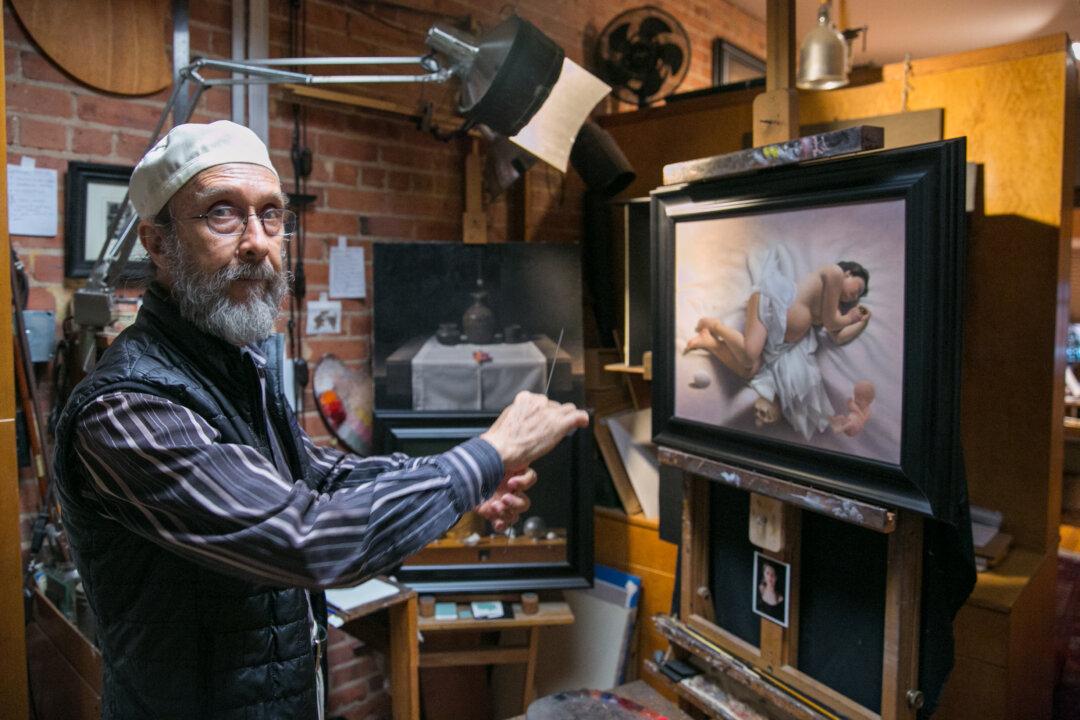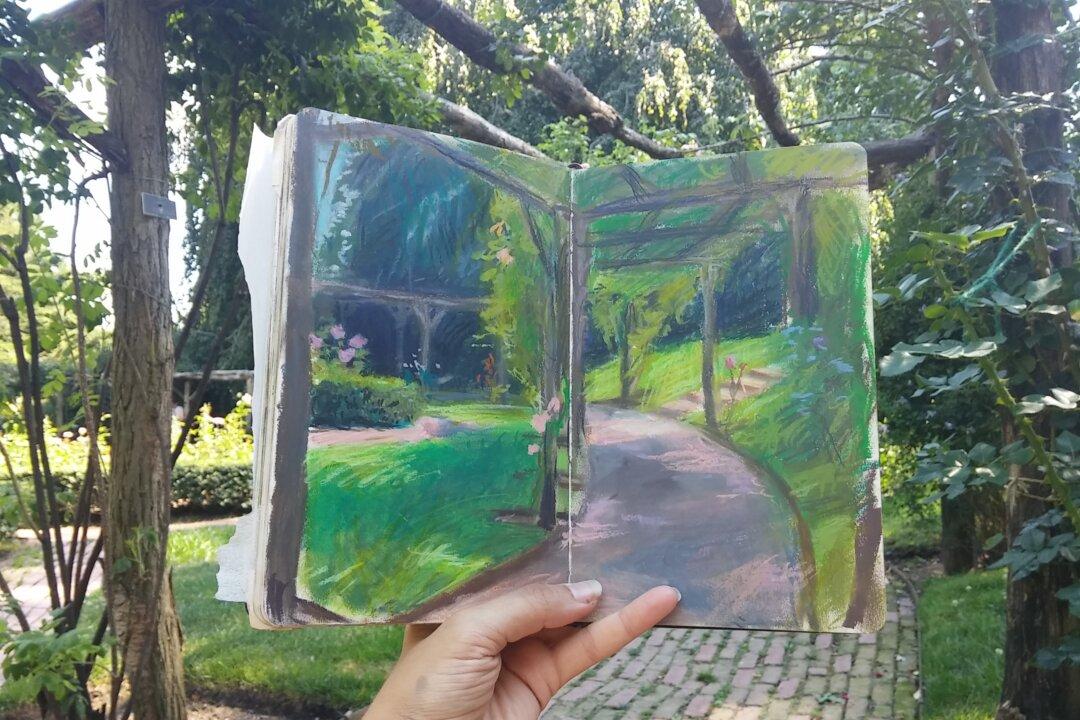NEW YORK—Carlos Madrid’s insatiable curiosity leads him to explore the beauty of nature and life. He’s been on a long journey of expressing the gifts life has offered him, and the mysteries that have unfolded before him. You can see it in his paintings. They are packed with meaning while exuding a deliberate sense of calm containment. Some are allegorical, others are meditative or even sentimental, but every one of them is harmonious.
“I have always been asking questions about the universe: what are we doing here, where are we going, what is the real purpose of life? Through my work, I try to piece together little symbols that kind of connect me to that big question,” he said in his cool, well-insulated apartment and studio, on a sweltering summer day in Manhattan.
He revealed the meaning of his visual lexicon, some reoccurring symbols in his paintings: “Pearls symbolize the ocean and life. … There’s no life without water,” he emphasized. “Rubies are about the beautiful things in life—the jewels that we have all over the place, like the plants, the flowers, the birds, the sunsets, the full moons. Rose petals are about the most delicate part of life. They are so fragile; they symbolize love, kindness, softness. The skulls remind us of our mortality; the eggs represent birth or beginnings,” he said.






